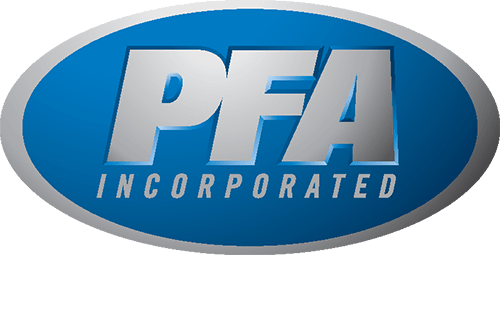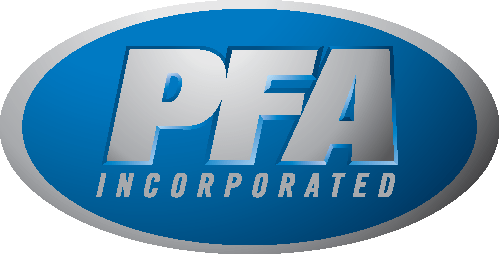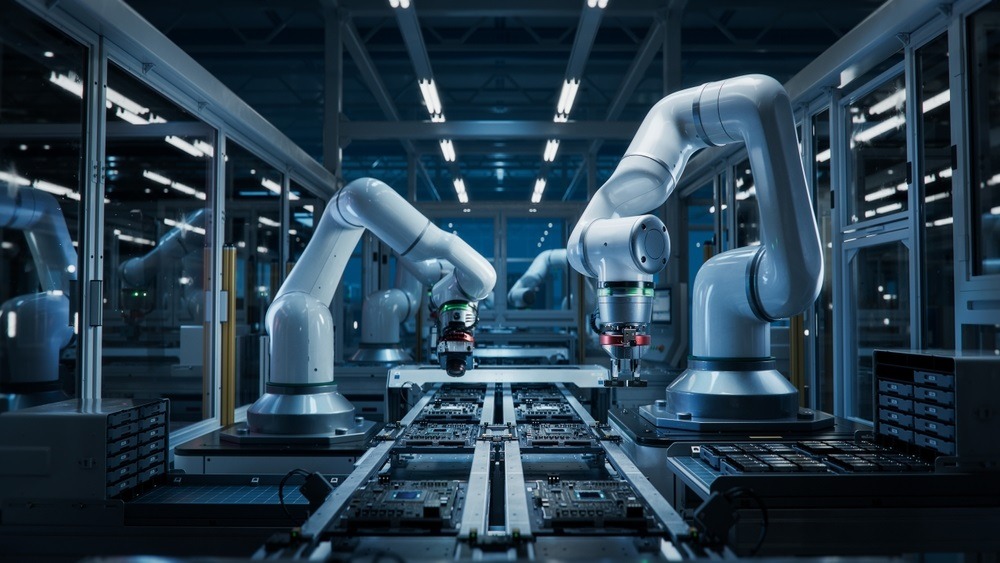In the busy world of manufacturing, keeping workers safe is a top priority. Did you know cobots and AI are changing the game in workplace safety? Our article dives into how these smart technologies can safeguard your team from harm.
Keep reading to discover innovative solutions for a safer tomorrow.
How Cobots and AI Improve Workplace Safety
Implementing cobots and AI in manufacturing environments not only revolutionizes efficiency but also serves as a critical component in enhancing worker safety, proactively identifying hazards and minimizing dangerous interactions.
These technological advancements bring forth a new era of collaborative workspaces where human expertise is complemented by machine precision to create safer conditions for all employees.
Automation and risk reduction
Automation is a game-changer when it comes to keeping workers safe in factories. By letting robots and artificial intelligence (AI) do the risky work, employees get to enjoy safer working conditions.
The number of injuries from doing the same motion over and over or from mistakes made by people drops a lot when machines start handling the hazardous jobs like moving materials around or operating heavy machinery.
AI is really good at watching for safety issues all the time, spotting dangers as they come up, and jumping into action fast during emergencies without being unfair or taking too long.
Having this kind of watchful eye around means that workplace dangers are dealt with before anyone gets hurt. Not only do workers stay safer, but companies also don’t have as much unplanned downtime because there are fewer accidents, making sure everything keeps running smoothly and without interruption.
Collaborative work environment
Collaborative robots, or cobots, are revolutionizing manufacturing by tackling dangerous tasks usually assigned to human workers. These AI-powered machines take on roles like machine tending and adjusting parts placement, allowing employees to dedicate themselves to more intricate and safer areas of the production process.
This change prioritizes worker safety and highlights a dedication to keeping staff out of harm’s way from workplace dangers such as repetitive strain injuries.
As these environments become more interactive, safety protocols need to adapt accordingly to safeguard both humans and their robotic partners. Leaders in the industry now have access to extensive real-time data which assists them in making better choices about workflow modifications, ergonomic enhancements, and continuous risk evaluations.
The emergence of this new cooperative workspace opens doors for businesses seeking improved productivity without neglecting health and safety measures. Moreover, embracing AI moves us towards cutting-edge safety features and more sophisticated methods for hazard detection which will be discussed further ahead.
Advanced safety features and risk detection
Ensuring Workplace Safety with Cutting-Edge Cobot and AI Technologies
- Smart risk assessment systems use machine learning to spot potential hazards quickly, so you can address them before they cause harm.
- Collaborative robots are built with sensors and vision tech that helps them sense people nearby, dodging unwanted bumps or crashes.
- Thanks to AI – driven predictive maintenance, equipment issues are caught early on, which cuts down on incidents related to faulty gadgets.
- Cobots designed for lifting heavy items follow strict safety measures, reducing the chances of workers developing strains or injuries from overexertion.
- In emergencies, automated protocols can turn off machines in milliseconds or activate safety locks to prevent worker harms.
- Enhanced monitoring through computer vision ensures all actions align with best practice safety procedures by spotting any missteps as they happen.
- Continuous analysis software checks that operations stick to safety rules and recommends updates suited to each industry’s unique context.
Our Solutions for Workplace Safety
At PFA, Inc., we prioritize your workforce’s safety by seamlessly integrating intelligent cobots and AI technologies into industrial settings, fostering a secure and innovative work environment.
Our commitment to providing tailored safety enhancements equips employers with the tools for safeguarding their teams while maintaining peak operational performance.
Integration of cobots and AI in industrial processes
Cobots and AI are making big advances in the world of industry, greatly improving safety at work. They’re being added to manufacturing routines to help decrease dangerous situations where people might get hurt by machines.
- Collaborative robots, also known as cobots, team up with workers for tasks like moving parts around and grabbing things off shelves. They’ve got smart safety features that stop them from working if there’s a chance they could bump into a person.
- AI uses data analysis to make these cobots even better by learning from what happens as they work, which helps them change their actions to avoid accidents before they happen.
- In jobs where the worksites can be risky, like making stuff or cutting down trees, cobots take over the dangerous duties so people don’t have to risk getting hurt.
- With cameras that act like eyes, robots can keep an eye on the space around them all the time. This means they can see when something unsafe might happen and then pause what they’re doing just in case.
- Keeping workers safe from injuries caused by bad posture is really important. Cobots are designed with this in mind; they do heavy lifting and repetitive movements for humans.
- Cobots that can move around add a lot of flexibility in how materials get handled. Since they navigate through workplaces without bumping into folks, operations stay smooth while everyone stays safe.
- People need good training so that they know how to work alongside these high – tech helpers safely and effectively. There are special programs out there meant just for this kind of training.
- When you hook up devices called IoT (Internet of Things) gadgets, it allows machines to talk directly with management systems so bosses always have fresh info about how machines are performing and if their employees are safe.
- Building tough systems means making sure all parts—the physical bits and their computer brains—work together perfectly when emergencies come up using lockout tagout steps or hitting emergency stop buttons.
Customized safety solutions for specific industry needs
Incorporating collaborative robots and artificial intelligence into industrial processes marks the first step. Taking these technologies further to align with unique industry needs leads to a real transformation in safety.
Workplace safety isn’t universal, especially concerning complex tasks that differ across various manufacturing settings. We customize our robotics and AI systems for accurate material handling or monitoring activities, greatly minimizing the chances of accidents between humans and machines, as well as cutting down on employee injuries like musculoskeletal disorders.
This targeted approach guarantees each solution integrates seamlessly with your operation’s specific requirements, fostering a safer environment that proactively addresses distinct workplace dangers.
In sectors such as logging or repositioning components within manufacturing, personalized safety strategies extend beyond standard measures. Leveraging analytic insights from Internet of Things (IoT) devices and enforcing control through instant monitoring systems provides an early detection method for service needs—identifying potential problems before they escalate into hazards.
Safety lockout tagout mechanisms are customized to match your equipment perfectly, ensuring confidence during maintenance work. By prioritizing ergonomics and developing custom AI applications, these specialized solutions cultivate a commitment to safety designed precisely for the daily challenges encountered on the factory floor.
Training and support for safe implementation
Train employees thoroughly on the unique abilities and tasks of cobots with detailed instruction periods.
Benefits of Cobots and AI in Workplace Safety
Harnessing the synergies of cobots and AI not only minimizes hazards but also unlocks new levels of operational efficiency—discover how these intelligent systems are reshaping the safety landscape in modern manufacturing.
Reduced workplace accidents and injuries
Integrating collaborative robots and artificial intelligence into manufacturing operations has turned safety standards on their head, especially when it comes to slashing the number of workplace accidents and injuries.
By taking on tasks like welding in dangerous spots or the hefty job of loading and unloading heavy materials, these high-tech helpers keep workers away from risky business. The spot-on accuracy of robotics also cuts down on mistakes made by tired or distracted humans—mistakes that can have serious consequences.
Collaborative robots are superstars at making jobs safer. They come with top-notch sensors that can sense if a person is near and change what they’re doing to avoid bumps or crashes.
Since cobots follow set instructions with unwavering performance 24/7, they get rid of guesswork and make work incidents few and far between—a big deal for folks working in fields like engineering or logging where one wrong step could mean big trouble.
Safety gets an extra boost as AI gadgets keep an eye on things all the time, ready to jump into action if anything starts looking out of whack to stop problems before they even start.
Increased productivity and efficiency
Harnessing the power of collaborative robots and artificial intelligence can result in significant boosts in productivity and efficiency for manufacturers. These cutting-edge tools take on repetitive, precision tasks, freeing employees to focus on more intricate areas of production that require human creativity.
As a result, companies can increase their output without compromising quality or safety.
Robotic automation end-effectors help streamline the repositioning of parts with a speed and accuracy that surpasses human ability. This leads to faster production times and greater overall efficiency.
With access to real-time data, managers are empowered to optimize workflows like never before. Internet of Things devices feed information into systems that constantly analyze performance.
This actionable data enables immediate fine-tuning of processes—a capability not possible with traditional methods—ensuring operations run smoothly with as little downtime as possible.
Automation not only elevates safety but also drives workplace efficiency forward by fostering productive partnerships between machines and humans across global manufacturing industries.
Cost savings in the long run
When productivity shoots up with the use of collaborative robots and artificial intelligence, manufacturers enjoy major financial gains over time. Using state-of-the-art robots to take on dangerous jobs not only improves safety but also cuts down expenses linked to injuries and accidents.
Automating risky tasks leads to fewer stoppages in production, which boosts overall efficiency and results in big cost savings.
Adding AI-driven systems offers more than just quick cost reductions—it transforms how health and safety are managed in the workplace by providing predictive insights and automated reactions when emergencies strike.
This ongoing advancement in monitoring operations greatly reduces risk factors. By investing in robot technology now, companies position themselves for a future where saving money comes from better safety methods and fewer incidents.
Contact Us for more information
Ready to make your workplace safer and more efficient with the help of cobots and AI? PFA, Inc. offers groundbreaking solutions tailored to meet the unique needs of your organization.
Get in touch with us today and discover how our expertise can integrate advanced safety into your operations. Let’s create a smarter, secure environment where both technology and humans work in harmony for better results.
FAQs
1. What are cobots and how do they improve workplace safety?
Collaborative robots, or cobots, work alongside humans to perform tasks safely, by using sensors and programming to avoid workplace hazards such as human-machine collisions.
2. Can AI help reduce risks in dangerous industries?
Yes, AI can analyze real-time data and assist with risk assessments in hazardous work environments like the logging and manufacturing industries, enhancing employee safety.
3. How does wearable technology contribute to occupational safety?
Wearable devices like fitness trackers monitor workers’ health metrics and alert them to potential dangers, supporting a strong culture of workplace health and safety.
4. Do cobots replace workers or change job requirements?
Cobots are designed for human-machine collaboration which can alter job roles; however, reskilling programs prepare employees for these shifts by developing new competencies.
5. What role does programming play in the functionality of collaborative robots (cobots)?
Programming is essential for defining the actions of cobots – it guides their movements for tasks such as parts repositioning or repair while ensuring they operate within safety regulations.
6. Are there technologies that simulate workplace hazards without actual risks?
Mixed reality (MR) creates virtual environments where workers can train in simulated scenarios without being exposed to real-life dangers — an innovative approach to preparedness in occupational safety training.


